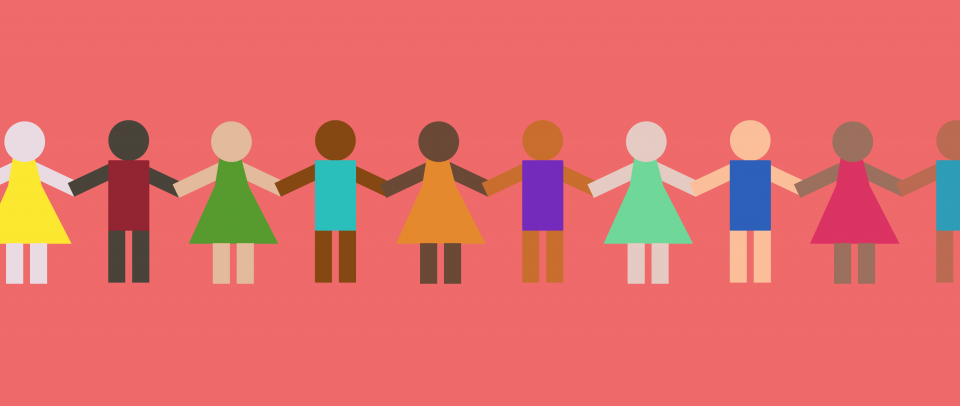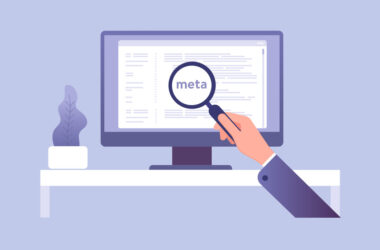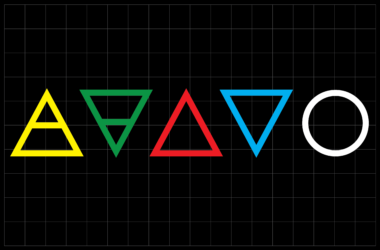Accessibility - The Next Big Thing Was Always Here
This is for everyone #london2012 #oneweb #openingceremony @webfoundation @w3c
— Tim Berners-Lee (@timberners_lee) July 27, 2012
“This is for everyone.” The intent and actual function of the web could scarcely be described more accurately and in fewer words than this sentence, displayed in the crowd and tweeted to the world by Sir Timothy Berners-Lee, the inventor of the World Wide Web, during the Opening Ceremony of the 2012 Olympic Summer Games in London. This is for everyone.
As the web becomes an ever more integral part of our lives and our society, it is high time we ask ourselves key questions like “Who is ‘everyone’?” and “What does that mean to say that something is ‘for everyone’?”
Information needs to be accessible and free
When the web was first invented back in the 1990s, it was as a means to facilitate sharing and updating information among researchers. The idea was to create a system through which a user could reach out to any available server through the Internet and retrieve hypertext documents that could be read, edited, republished, and shared back across the web. Describing how it all came together, this is what Berners-Lee stated in an interview with Achievement.org:
Creating the web was really an act of desperation, because the situation without it was very difficult (…) Most of the technology involved in the web, like the hypertext, like the Internet, multifont text objects, had all been designed already. I just had to put them together.
What Berners-Lee did, and what has made the World Wide Web one of – if not the most -revolutionary technological achievements of the 20th century, was using technology to improve the accessibility of information.
23 years later, the vision of the web as an informational playpen for academic research has evolved into one of the web as a worldwide idea exchange. The “everyone” is, quite literally, everyone with the ability to access the Internet.
Stewart Brand famously said, “information wants to be free”, and he was right in both the literal and the figurative sense. While Brand was referring to the monetary valuation of information, the lexical ambiguity of the English language also provided an additional interpretation (possibly intended): Information wants to be without limits and limitations. As free as a bird, singing to whomever lends it an ear.
The web gave information a level of freedom it had never had before, and even today we are grappling with what it means for us, a society where everyone can share and access information on a virtually unlimited basis.
Just as importantly, the web unlocked an overlooked aspect of information itself: Information, in essence, has no form, format, or presentation. Information is simply that: Information. The presentation of information – visual, auditory, tactile, or otherwise – is but an interpretation of that information, a means for communicating the information. What the web did was change how we prepare information for distribution. Rather than formatting the information for a specific medium, say printing it on paper or recording it on audiotape, the web utilized hypertext to make the information available for software interpretation at the hands of the recipient. Now, the person who accesses said information controls its presentation as well.
Power to the people
Marked up properly, all web content is accessible. That means you can access it through your regular web browser and see it as it was designed by the publisher; you can access it through a text-to-speech browser and have it read back to you; you can access it using a Braille display and read it with your fingertips; or you can even have a computer translate the information into a different language.
The web was also created to make references within and between documents more accessible. The quality of information in a document would be greatly improved if you were able to quickly access footnotes and references without having to search for them independently. This was achieved through anchors (commonly known as “links”), and these anchors have become a staple of the web, as we know it.
The web was created to bring the power of information to the people, to make information available to everyone. And, at its core, it did.
So…. Is this for “everyone”?
Is all the information on the web available to everyone? The simple and tragic answer is no. But it should be. And it can be.
As the web evolved, the idea of the web as a means to provide access to information became intertwined with the idea of providing a way of presenting this information. The desire to make the information appealing has trumped the desire to make it available. Or, rather, the seemingly ubiquitous availability of information has shifted our focus away from accessibility and towards presentability. On the distributed information system created to make information accessible to all, we have taken accessibility for granted and built structures that, although visually and experientially appealing, stand in the way of direct access to that information. In our endeavor to make the web great, we have inadvertently made it inaccessible.
Accessibility is for “everyone”
One could argue this lack of focus on accessibility is caused by ignorance; by a lack of empathy for those with accessibility needs; a lack of understanding of web technologies; or even a simple lack of exposure to people with visual, hearing, physical, or cognitive impairments. But, while all these may be true to some extent, I believe the predominant reason behind the move away from the accessible web is simply that those who create and publish content on the web have seen no personal need for accessibility. Accessibility has simply long been absent in the conversation. A null value. Something assumed implicitly. The web is accessed through a computer or a handheld device and displayed on a screen. That is all the web is.
Except that was never the case. We are fast approaching a time when this illusion will come undone.
As you read this, two driving forces are powering the fundamental shift in the web and our interactions with it: The API-fication of content and the “Internet of Everything”. Web publishing is still largely focused on the web page, yet the systems that serve up information to these web pages are transforming behind the scenes. WordPress, a platform that powers more than 22% of all webpages worldwide, will launch a new API before the end of the year. Which means that, as of Q2 2015, close to a quarter of the websites in the world will have the ability to serve up information in a variety of ways to new devices and platforms that circumvent the choices of the original creator and publisher. For WordPress-powered sites, the information will be freed from the constraints of the web page to flow to any and all visitors.
Accessibility has simply long been absent in the conversation. A null value. Something assumed implicitly.
Simultaneously, technology companies work feverishly to push out new types of Internet-powered devices that will give us access to the web in new ways. We’ve already seen the beginnings of this in Apple’s Siri, Android’s Google Now, and Microsoft’s Cortana: Handheld applications that take the concepts of accessibility tools and make them ubiquitous. It is only a matter of time before users will expect the ability to surf the web through voice commands and have their favorite sites read back to them. The only thing standing in their way is the general lack of accessibility on the web.
These same manufacturers are also working on putting the web in places we’ve never expected it to be. We’ve all heard stories of the Internet-enabled fridge that can order us food, but a more practical application is the Internet-enabled car that will start shipping over the next year. Using voice to navigate the web and have it read back to you while driving will likely become a top consumer request.
The same can be said about wearables. Watches, glasses, contact lenses, and beyond will trawl the web for data, granting consumers access through them.
The API-fication of the web will get us part way there, but to reach the goal of a web that truly is for everyone, we will need to place accessibility back to the top of our priority list. The web was built to make information accessible, and when it is, we will all benefit.





